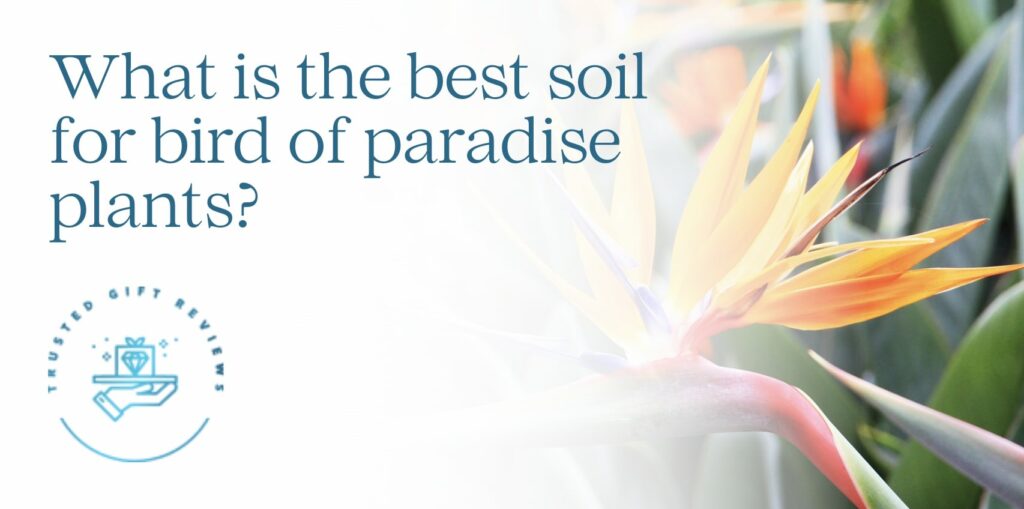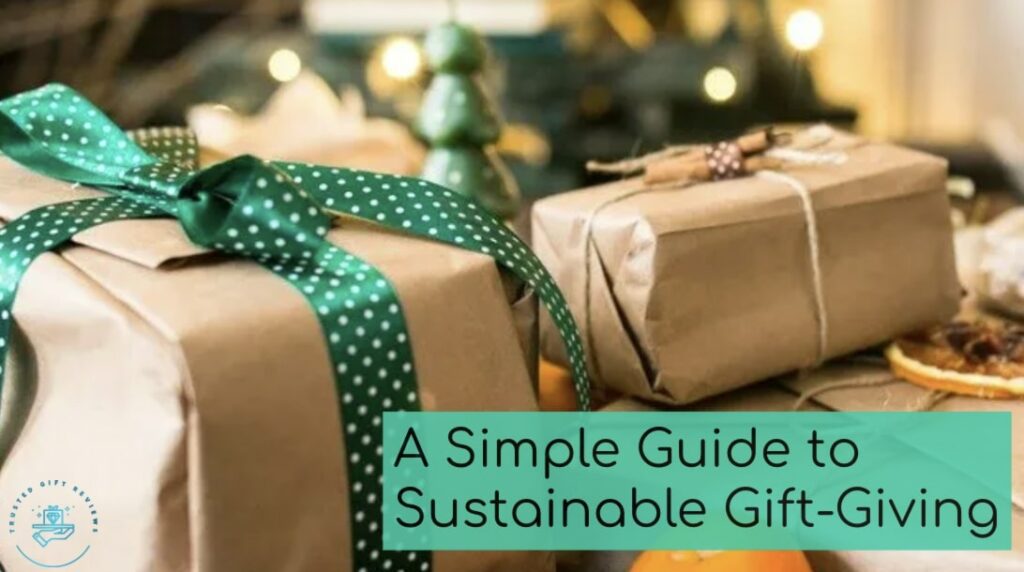1/2 houseplant soil + 1/2 compost + 1/2 coco coir or peat moss
Bird-of-paradise flowers do best in loamy, light, and well-draining soil. This allows their roots to absorb enough water and air for the plant to flourish.
In addition, the soil should be slightly acidic or basic with a pH value between 5.5 and 7.5 so that more nutrients will be channeled to the plant.
You can make an ideal potting soil for this amazing tropical flower with some of the recipes we’ll show you. One combines 1/2 houseplant soil, 1/2 compost, and 1/2 coco coir or peat moss for a light and porous result.
Keep reading to learn more about the best bird-of-paradise care practices, including the ingredients of the right soil and how to make a good bird-of-paradise soil mix.
What is the significance of the right soil for bird-of-paradise?


The right kind of soil mimics bird-of-paradise’s native growing medium in Africa. It, therefore, helps the flower to fully develop and mature in your indoor space or garden.
As you know, each plant has a specific preference for soil, light, water, and other care aspects. They have to be strictly followed, or the plant will be harmed or its growth will be hindered.
Right soil allows the plant to take in ample air and water so it can undergo the food-making process of photosynthesis.
As for birds-of-paradise, they require plenty of oxygen in their soil. That’s also why they need airy and open soil.
What’s more, the plant hates staying in moist or wet soil, as this can lead its roots to become damaged.
As a result, it can’t carry out its functions normally, and you can tell this by a variety of symptoms, like falling or wilting leaves, and even death if it’s not tended to soon.
What happens if I give bird-of-paradise poor soil?
Here are just some of the effects of using poor or just any soil mix for birds-of-paradise plants:
1) Curling Leaves
The plant reacts to the wrong type of soil by curving its leaves inward or upward. Most often, this is a sign of underwatering and/or having an incorrect soil pH balance.
What to Do 🧤
When you see this outward sign, you may need to water your bird-of-paradise plant more regularly or keep the pH level a bit acidic or alkaline.
2) Yellowing Leaves
Yellowing leaves can be brought about by a flaw in watering. It’s telling you that you could have watered the bird-of-paradise just too little or too much.
What to Do 🧤
The solution is to check your watering. Water the bird-of-paradise once or twice every week or more if the weather is scorching.
But if you have watered it correctly, the cause can be attributed to nutrient deficiency instead. So aim to feed it with fertilizer or supplements, and see if this solves the problem.
3) Leaflessness
If you’ve unknowingly used the wrong soil or watered it incorrectly, the bird-of-paradise may struggle to grow the large, elongated, dark-green leaves it’s known for.
However, poor soil brings more negative signs than just leaflessness since the plant is suffering badly. It may also accompany stunted growth and a lack of flowers.
What to Do 🧤
In this event, the best thing to do is to repot the entire plant with new soil, water it sufficiently, and feed it with well-balanced fertilizer in its growing season.
4) Root Rot
Root rot is often caused by overwatering the plant. But improper watering isn’t the only reason; using hard and dense soil may actually be the root cause.
What to Do 🧤
What you can do to fix the problem is to stop or reduce your watering of the plant, take out the plant temporarily, and snip off the rotten roots.
Furthermore, you can repot the entire plant with the right soil and pot container (with drainage holes) and care for it as usual.
5) Failure to Flower
Failure to flower is another consequence of bad soil. If you use unconducive soil for the bird-of-paradise plant, it will greatly affect its ability to take in light, water, and nutrients.
Without light, water, and the needed nutrients, say goodbye to the hopes of seeing the flower bloom.
What to Do 🧤
Thankfully, there’s a way to remedy this issue. If you suspect that you have the wrong soil, change it immediately.
But if the plant isn’t getting sufficient sunlight or water, simply move it to a brighter spot or water it regularly.
Another reason for the flowers not sprouting is you could be overfeeding the plant with fertilizer that’s high in nitrogen. This makes the plant only devote its energies to producing leaves but not flowers, so choose a balanced plant food.
What are the different soil elements I can use?


- Houseplant Soil – This is the most basic element of a plant potting soil. The four main types of natural soil are sand, clay, silt, and loam.
Of the four types, loam is the most well-balanced, being the combination of silt, clay, and sand. And a loamy kind of soil is what birds-of-paradise plants prefer.
The reason for this is that loamy soil has excellent drainage, aeration, and moisture retention properties. Also, it has the essential nutrients for the plant to thrive!
- Compost – This is a mixture of decayed organic matter. You can make base houseplant soil better by mixing it with compost.
Several examples of matter that go into the plant compost include straws, twigs, manure, grass clippings, and food scraps.
In a nutshell, they can enhance the nutrients and drainage that the soil gets and is thus an important component of every potting medium.
- Perlite – It consists of small volcanic rocks that have great benefits for the soil. They promote its aeration and drainage while not holding too much water to soak through the soil.
- Pumice – Like perlite, pumice is a natural igneous or lava-solidified rock that’s obtained from quarries.
It gives a few good advantages to the soil, which are effective drainage, overwatering or root rot resistance, and moisture retention.
- Peat Moss – This one is composed of decaying plant matter and grows in boggy wetlands. It’s dark and fibrous in appearance and helps the plant retain moisture and absorb air and nutrients.
- Coco Coir – Also called coconut fibers, these are produced from coconut husks. This material is brown and light, resembling tea leaves.
Gardeners love to amend the soil with coco coir because it’s great at retaining moisture ten times its weight and increasing drainage.
- Pine Bark – This is an example of bark mulch. They are shredded wood pieces taken from maritime pine tree barks.
It’s rich in the substance lignin, helping to lighten the soil and retain the soil’s shape for plant stability and productive growth.
- Orchid Bark – Another kind of bark mulch, orchid bark is derived from a coniferous tree suitable for orchid soil mediums. But it can be used for other soils as well.
It’s an all-rounder in that it helps improve the soil’s drainage and airflow as well as gives it essential nutrients for growth.
- Active Charcoal – This is a fantastic dark soil ingredient that detoxifies the soil of chemicals and bad bacteria, shields it from dampness and odor, and resists harmful pests.
Besides that, it significantly increases the soil porosity to let water and air in. So, even if you have accidentally overwatered your plant, the charcoal can absorb the surplus water, thereby preventing root damage.
What are the recipes for making a bird-of-paradise soil mix?


Here are three recipes for your custom bird of paradise potting soil:
Recipe #1 – Soil-Based Potting Mix
- 1/2 part houseplant soil
- 1/2 part compost
- 1/2 part coco coir or peat moss
- 1/2 part pine or orchid bark
This is the standard soil recipe for your bird-of-paradise. As you can see, it’s complete with ingredients that benefit the soil’s aeration, drainage, and water retention.
This will allow you to achieve the exotic flower’s preferred and ideal soil—light and porous.
Recipe #2 – Soilless Potting Mix
- 1/2 part coco coir or peat moss
- 1/2 part compost
- 1/2 part perlite
- 1/2 part orchid bark
Alternatively, you may want to try creating a soilless potting mix for your bird of paradise. The difference between soilless and soil mediums is that the first makes it sterile.
In other words, soilless ones are freer from pathogens like risky diseases, fungi, and bacteria.
But you would have to use 1/2 or 1 part of perlite to substitute for the houseplant soil, depending on how much potting mix you want to make.
Recipe #3 – Active-Charcoal-Based Soil Mix
- 1/2 part houseplant soil
- 1/2 part compost
- 1/2 part perlite
- 1/2 part horticultural charcoal
The third recipe is also soil-based, but in place of bark orchid or pine bark, you use horticultural charcoal.
This is also an excellent mix, as it’s very well-balanced. The soil lets sufficient air and water in without any problem and is more resistant to lethal diseases and aggressive pests.
What pH range should I keep bird-of-paradise in?
Apart from that, keep in mind that bird-of-paradise soil should be a little acidic or basic within a pH value of 5.5 to 7.5.
It’s also vital to get this part right since it determines how much nutrients the plant would get from the soil through its roots.
How do I make a bird-of-paradise potting medium?


Follow the steps below to make the best bird-of-paradise potting soil:
- Gather all the ingredients in a bucket or plastic container.
- Pour a bit of water from a can or vessel until the ingredients are only slightly wet.
- Stir the mix evenly and thoroughly using a gardening spoon, trowel, or your bare hands.
What commercial soil can I use for bird-of-paradise?


Don’t want the hassle of creating your own bird-of-paradise soil? You can just buy these commercial soils from a garden specialist or florist.
- Soil Sunrise Bird of Paradise Potting Soil – It’s already a complete soil mixture for birds-of-paradise. It’s all natural without any artificial fertilizers added.
But you can add your choice of fertilizer to this potting soil if you want.
- Miracle-Gro Performance Organics Container Mix – If you want an affordable bird-of-paradise soil mix, this one should be your pick.
It’s already blended with aged compost, sphagnum peat moss, and perlite, aiding their growth and development. With this, you needn’t worry about mixing them at all.
- Miracle-Gro Indoor Potting Mix – Do you want to grow a bird-of-paradise plant indoors in a pot? If so, you might want to use this specially made potting mix.
Its main soil element is coconut coir, which facilitates drainage. It also holds a lot of water so your plant will stay hydrated longer, especially under hot weather.
And on top of that, it reduces pests like gnats and mosquitoes thanks to its bark-less blend.
How do I care for my bird-of-paradise plant?


We’ve summed up how to take care of your bird of paradise plant below:
- Sunlight
Whether you locate the bird-of-paradise in or out of the house, it needs a bright but still shaded spot to grow verdant leaves and colorful, dramatic flowers.
Like the snake plant, the bird-of-paradise flower can tolerate lower light locations enough for it to survive. However, it will stop producing new leaves and blooms.
Moreover, don’t put them in the direction of harsh noon or afternoon sunlight, as their leaves may burn as a result.
- Water
Water the plant only when the top one inch has become dry. Do this once or twice a week depending on the climate.
The hotter and dryer it is, the more you need to water it.
Remember, keep to its watering schedule to prevent under or overwatering the plant, which will harm it.
- Soil
As we mentioned, bird-of-paradise soil must be loamy, humus-rich, and well-draining. It needs to get a lot of air to be able to breathe, grow, and make food.
Only place the plant in a pot with drainage holes. This way, excess water can come out of the holes so that the soil can dry normally.
- Temperature and Humidity
The optimal temperature for the bird-of-paradise is slightly or moderately warm between 65℉ and 85℉.
Aside from that, you have to keep the humidity around the area at the correct level too. Bird-of-paradise should do well in a place with a moisture level of 60 percent or more.
- Fertilizer
These lovely plants are heavy feeders. Give them a balanced fertilizer monthly throughout the growing season in spring and summer.
However, reduce your feeding them come autumn time and let them rest in the winter, or their growth will be affected.
More on Plant Soils
- What is the best spider plant soil?
- What is the best soil for jade plants?
- What is the best soil for aglaonema?
- What is the best rubber plant soil?
- What is the best soil for peace lilies?




